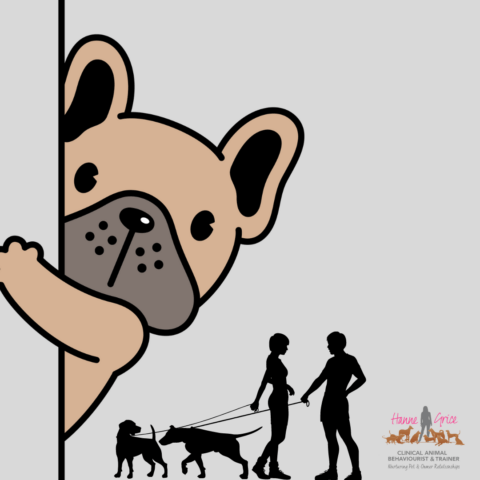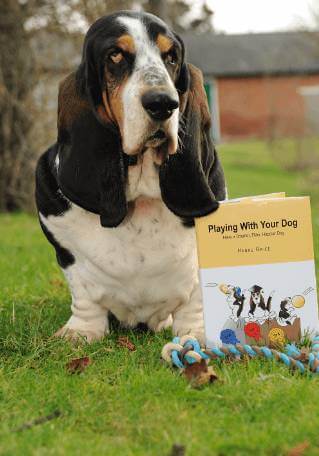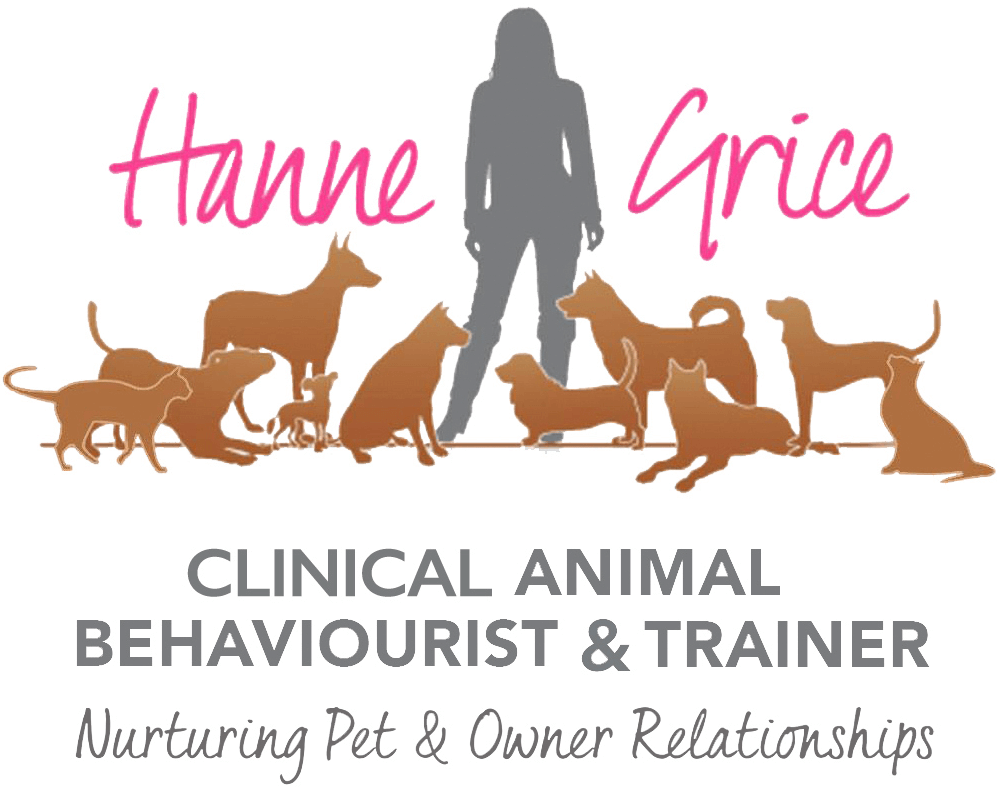In Part 1 of our ‘Ruff Guide’ to adolescent dogs, we explored the significant behavioural, hormonal, and neurological changes that occur in dogs from around five months of age to approximately 2.5-3 years. Understanding these changes that occur and knowing what to expect during this critical stage of development is the first step in supporting your teenage dog. Part 2 of our Ruff Guide focuses on strategies that you can immediately implement as you and your dog navigate this phase together. It’s a more extended read than usual, so grab a cuppa and settle in.
PART 2 – Practical strategies for your teen dog
Dog adolescence lasts a considerable time. So, the following strategies aim to help owners ride the crest of the teenage dog wave, amidst the storm that is puberty! There is a common theme throughout – calmness and consistency in training, routines, management, and more! Download my infographic PART 2 for a quick summary.

Consistent training
Adolescents often struggle with impulse control due to ongoing brain development. This means risk-taking tendencies increase, such as dashing off after others on walks, where previously your dog may have stuck by your side. During this time, there is often a decline in previously learned behaviours. So, while we may think our dog ‘should’ know what to do, often the behaviours taught may not be as robust as we thought across different situations. Temptations are aplenty for our teens. Go back to basics; teach key skills that nurture your dog’s impulse control; be consistent in practicing these to maintain the wanted ‘stuff’; practice in short micro-sessions – think 5-10 repetitions here and there, using TV advert breaks or the kettle boiling as a prompt to practice.
This will help make for a happier dog-owner relationship! And what could be better than that. Click here to read what I consider to be the 10 behaviours all good puppies should know, for ideas on key foundation behaviours.

Engage in impulse control exercises like “leave it” and “wait.” These exercises teach your dog to pause and think before acting, improving self-regulation. Recognise that your dog is not being deliberately being naughty or stubborn, they are just undergoing significant brain changes. And, by providing a variety of enriching experiences throughout dog adolescence, you can support neurological development, helping build greater resilience and adaptability – crucial for a well-rounded adult dog.
Gamify your training
This is a great way to help make any training fun for you and your dog. There are many ways you gamify behaviours with your dog – see some examples below, that hone your dog’s foundation skills.
Recall game 1 Hand Target Basic: Introduce a basic hand target behaviour to your dog, so that every time they touch your hand, you use a marker sound (e.g., “yes”) then reward with food, praise, touch, chase – whatever your dog loves. Then add in a verbal cue like “Come” when you present your hand, so you connect the visual signal to the verbal cue. Check out the example with me and my dog, Hattie.
Recall game 2 Ping Pong: Having taught this, now progress to games such as Ping Pong. Here your dog is the ‘ball’, and you ‘bat’ against another person – your dog is called with the recall cue and hand signal, rewarded for touching the hand, and the aim is to see who can get their dog to them the fastest. This is a great way to get some high cardio exercise going with your dog across 2-3 minutes, and build in positive associations to coming when called. Click here to for a breakdown on how to teach this game.
Recall game 3 Peek-A-Boo: Teach your dog to come around the side of your legs, and sit in between your legs, so they are under you. This fun trick can be used to support recall. Some call this “middle”, I call it “peek-a-boo”! Whatever you choose to call it, it is a fabulous way to get your dog moving and burn energy. You are creating a circuit; you cue “peek-a-boo” – mark (e.g., “yes”) when your dog comes and sits under your legs – then toss the reward away from you – and repeat. This game means your dog remains close to you, and is getting money in their doggie bank account for coming when called. See my video below, to learn how to teach this.
Level up “leave” – Pac-Man style: Having an awesome “leave” behaviour is an important tool in your dog’s toolkit. It assists with recall (being able to disengage from the distraction, and turn away from it), it helps reduce the potential for escalations (e.g. cueing “leave” when your dog pulls towards another), and can be a life saver, such as when they head towards a dropped raisin brownie! Click here to understand how to teach leave and progressions.
Once you have acquired the leave behaviour, now build in added challenge with the Pac-Man game. Asking your dog to “leave” having laid out a trail of kibble in a row. When ready, cue your dog to “get it.” See the video example below with Hattie. As your dog gets the idea, you can create curved trails, or use higher value items for added challenge!
Consistency applies to other areas, including feeding, sleeping, exercise regimes, handling methods, and quality time with your dog. Such predictability can help reduce dog anxiety and help provide a sense of security for your dog. For more ideas, read my book Playing With Your Dog.

Maximise motivation
You may have gathered by now, from reading the above, that using positive reinforcement training is essential. It helps strengthen the association between the desired behaviour and the reward, encouraging repetition. That’s why we use training and patterns games to make training fun and motivating for all. Importantly, by increasing the rates at which you reward your dog through praise, play, touch, food, facilitating chase, etc., you will immediately create greater focus and attention on to you.
Check out my handout on the Rule of 1/3s for Food to help you spread out your dog’s calories across the day, so you can increase the rate at which you reward with food stuffs, without piling on the pounds! And, to understand what really “floats your dog’s boat” in different contexts, conduct a Preference Test. Learn more about maximising motivation.

Manage energy levels and enrichment
As discussed in the Ruff Guide – Part 1, adolescent dogs have fluctuating energy levels. This means striking a balance between ensuring your dog receives ample physical exercise, tailored to their breed, size, stamina and abilities, with quality rest. Exercise includes regular walks, play sessions, and using owner-dog games like fetch or tug-of-war to burn some excess energy and boost ‘happy’ hormones. Mental enrichment is equally important for promoting calmness and busting neurons. This can be provided via puzzle toys that enable foraging, as well as interactive feeders, licke pots, etc., that challenges your dog’s mind, encourages independent play, and allows for natural behaviours like searching, pawing/digging, and so on. Hide treats around the house, progress to the garden then practice out on walks, encouraging your dog to “find it”, using their nose. This helps stimulates their brain and put their fantastic scenting abilities to good use.
Canine adolescents, just like human teens, require consistent quality and uninterrupted rest/sleep. If you have a busy household where children, regular visitors, and or other animals are present, or you take your teen to work with you, this may increase the risk of disturbed sleep, lowering your dog’s tolerance levels. In turn, this could lead to increased frustration-related behaviours, such as barking, jumping up, etc. Ensure your dog has a quiet, comfortable space where they can retreat to sleep. A consistent sleep schedule helps regulate their internal clock and reduces stress. Create a sleep-friendly environment for your dog. This might include a comfortable bed, minimal noise, and dim lighting. Avoid disturbances during their rest periods to ensure they get uninterrupted sleep.

Address social dynamics and anxiety
Adolescence can also bring about changes in social preferences. Gradually exposing your dog to new people, dogs/other animals, and environments in a controlled yet positive way should start from puppyhood – and – be continued throughout the dog’s early years. This includes but is not limited to supervised, structured, positive play with dogs. Provide regular positive experiences with other dogs; ensure interactions are well-managed and supervise play with others. Positive dog-dog interactions goes beyond playing, it includes learning that they can ‘hang out’ or walk by dogs in proximity and remain calm. Teaching our dogs to potter and sniff about, lay/rest as dogs are around, and rewarding them for calmness is a critical life skill. Such experiences and interactions help to build and nurture your dog’s resilience in social settings.
To build resilience also means to be your dog’s advocate. Consider the environment in which you are in, the number of distractions or stressors around you, the type and duration of play with another dog, and account for your dog’s size/breed/weight and play style – making sure it matches well with the other dog[s]. Observe your dog’s behaviour and body language signals, as well as others. This will help you to determine when they are enjoying a situation or need a break. If you are unsure, create frequent breaks from dog play (e.g.) using a recall cue or “find it,” moving around, or giving a whistle – do anything to get their attention in a calm way. Frequent breaks from dog-dog play helps avoid “OK” play turning to “not OK”! Watch some of the great video resources from trainer Sue Sternberg and behaviourist Sarah Whitehead for examples of dog-to-dog interactions, to hone your observational skills.

Environmental management and support
An immediate way to reduce the risk of escalations of behaviour and practice of undesirable ones is by having great environmental management! Hormonal surges during adolescence may increase the risk of territoriality, dashing off/roaming, scent marking, and other changes in dog behaviour. Check your property’s boundaries regularly and consider your dog’s growth rate and strength. For example, 4-foot fencing may have contained the dog when a puppy, yet could be cleared or gates pushed open by the dog teen. So, adjustments may need to be made in and around the property. Review zoning inside the home, too; this can prevent curious canines from accessing countertops, laundry baskets, and more.
For example, I recently had an SOS call from a puppy graduate whose dog had growled and air-snapped, having jumped onto the client’s bed, and the husband asked the dog to move. The family had been away on holiday, the dog had been staying elsewhere, and weeks beforehand, the baby gate from the stairs had come down as the dog had shown little interest in going upstairs. However, overjoyed at being reunited with his ‘mum’ and likely overwhelmed by the change in routine due to the holiday, the dog escalated his behaviour where he anticipated being separated again from his owner upon being asked to move. Immediately reinstating the baby gate stops the dog from accessing the bedroom, preventing this issue from happening again, whilst enabling the client to focus on their dog’s training to reduce future escalations.
Thanks to the onset of juvenile shyness during puberty, along with other factors, anxiety-related behaviours such as the example above, can emerge. For females, the first oestrus cycle can lead to lethargy and increased vocalisation. As already mentioned, creating a safe space for your dog at home where they can retreat and be left undisturbed if they feel overwhelmed, is helpful. Furthermore, consider using calming aids like Dog Appeasing Pheromone diffusers, calming music for dogs to mask ambient sounds that can otherwise trigger barking, plus calming chews or daily nutraceuticals (supplements), can help to reduce anxiety. If you have any concerns about your dog’s behaviour, seek help from a qualified animal behaviourist. Check out the Practitioner Directory via The Animal Behaviour and Training Council, where you will find rigorously assessed professionals in your local area. They will provide tailored strategies and behaviour modification plans to support you and your dog.
Key takeaways
Adolescence is a challenging yet rewarding phase in your dog’s life. By utilising consistent positive reinforcement training, having great environmental management, honing your dog body language skills, and providing predictable routines that strike a balance of physical/mental enrichment with quality interactions, rest, and sleep, you can support your dog through this transitional period – whilst staying sane! Remember, this phase is temporary. All the efforts you invest in now will pay off in the long term, leading to a more resilient and securely attached pooch.
Good luck and happy training!
References
- Asher, L., England, G.C.W, Sommerville, R., Harvey, N.D. (2020) ‘Teenage dogs? Evidence for adolescent-phase conflict behaviour and an association between attachment to humans and pubertal timing in the domestic dog.’ Biology Letters.16(5):20200097. doi: 10.1098/rsbl.2020.0097.
- Bray, E.E, Sammel, M.D, Seyfarth, R.M, Serpell, J.A, Cheney, D.L. (2017) ‘Temperament and problem solving in a population of adolescent guide dogs.’ Animal Cognition. 20(5):923-939. doi: 10.1007/s10071-017-1112-8.
- Mills, D.S., Karagiannis, C.I., Zulch, H. (2020) ‘Stress—Its effects on health and behavior: A guide for practitioners.’ Veterinary Clinics of North America: Small Animal Practice. 50(4):749-763. doi: 10.1016/j.cvsm.2014.01.005.
- Ritvo, E. (2013) Parenting and the amazing teen brain part 1. Psychology Today. Available at: Parenting and the Amazing Teen Brain Part 1 | Psychology Today United Kingdom (Accessed: 28 May 2024).
Learn more about our classes

Get Hanne's book, clothing and more
Hanne has a number of publications including her book Playing With Your Dog to help owners work out the games that are best suited for their pet to play throughout his life, from puppyhood to old age, available from Amazon. Check out Hanne's range of contemporary casuals The Collection – for pet lovers made from recyclable, organic materials that are sustainably sourced.

